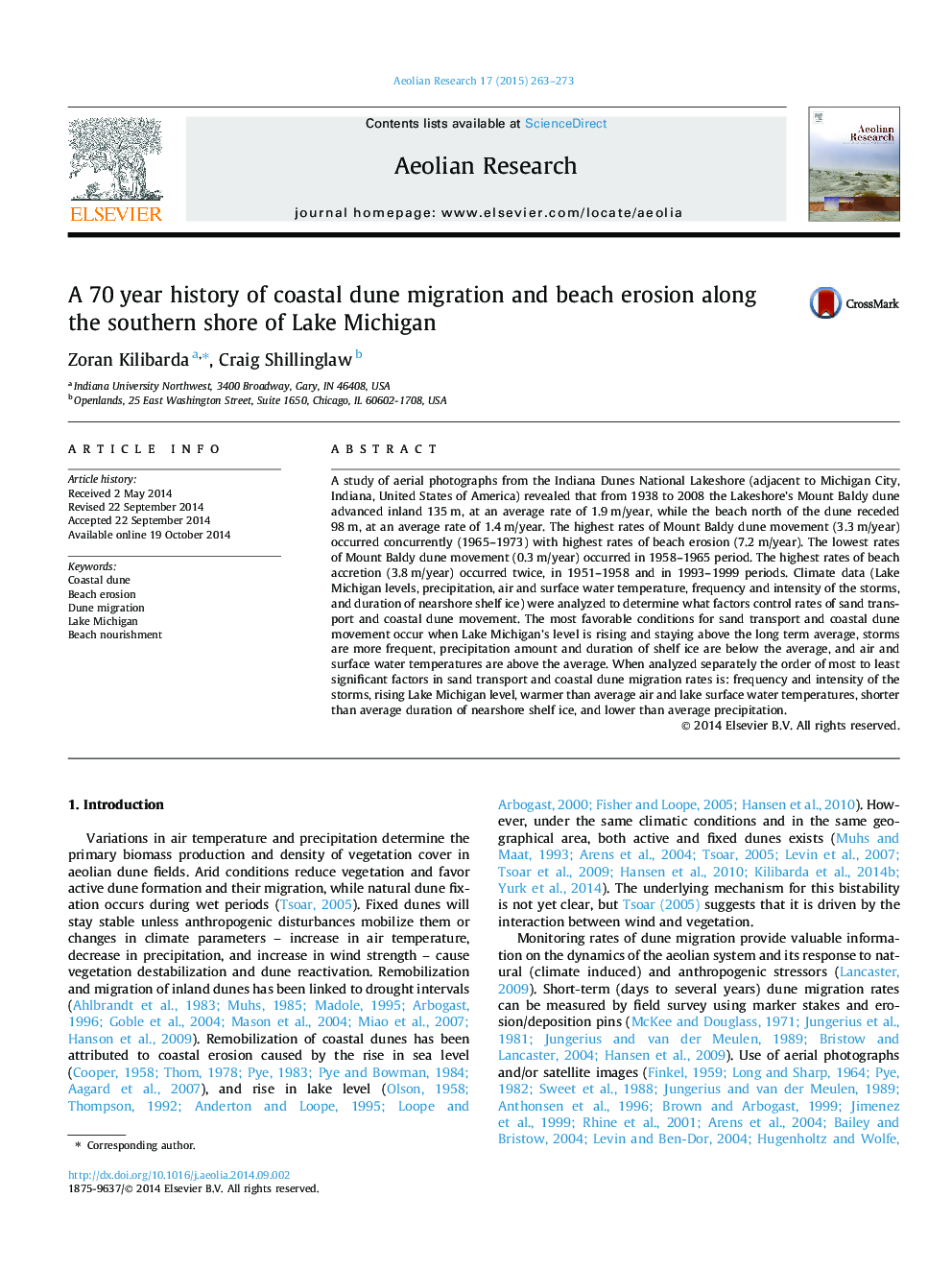| کد مقاله | کد نشریه | سال انتشار | مقاله انگلیسی | نسخه تمام متن |
|---|---|---|---|---|
| 4673769 | 1634110 | 2015 | 11 صفحه PDF | دانلود رایگان |

• Aerial photographs from 1938 to 2007 were used to track dune migration rates.
• Climate data were analyzed to depict the trends in dune behavior.
• Highest rates (3.3 m/year) of dune migration inland occurred from 1965 to 1973.
• Lowest rates (0.3 m/year) of dune migration inland occurred from 1958 to 1965.
• Highest rates of dune migration occur during more frequent and intense storms.
A study of aerial photographs from the Indiana Dunes National Lakeshore (adjacent to Michigan City, Indiana, United States of America) revealed that from 1938 to 2008 the Lakeshore’s Mount Baldy dune advanced inland 135 m, at an average rate of 1.9 m/year, while the beach north of the dune receded 98 m, at an average rate of 1.4 m/year. The highest rates of Mount Baldy dune movement (3.3 m/year) occurred concurrently (1965–1973) with highest rates of beach erosion (7.2 m/year). The lowest rates of Mount Baldy dune movement (0.3 m/year) occurred in 1958–1965 period. The highest rates of beach accretion (3.8 m/year) occurred twice, in 1951–1958 and in 1993–1999 periods. Climate data (Lake Michigan levels, precipitation, air and surface water temperature, frequency and intensity of the storms, and duration of nearshore shelf ice) were analyzed to determine what factors control rates of sand transport and coastal dune movement. The most favorable conditions for sand transport and coastal dune movement occur when Lake Michigan’s level is rising and staying above the long term average, storms are more frequent, precipitation amount and duration of shelf ice are below the average, and air and surface water temperatures are above the average. When analyzed separately the order of most to least significant factors in sand transport and coastal dune migration rates is: frequency and intensity of the storms, rising Lake Michigan level, warmer than average air and lake surface water temperatures, shorter than average duration of nearshore shelf ice, and lower than average precipitation.
Figure optionsDownload as PowerPoint slide
Journal: Aeolian Research - Volume 17, June 2015, Pages 263–273